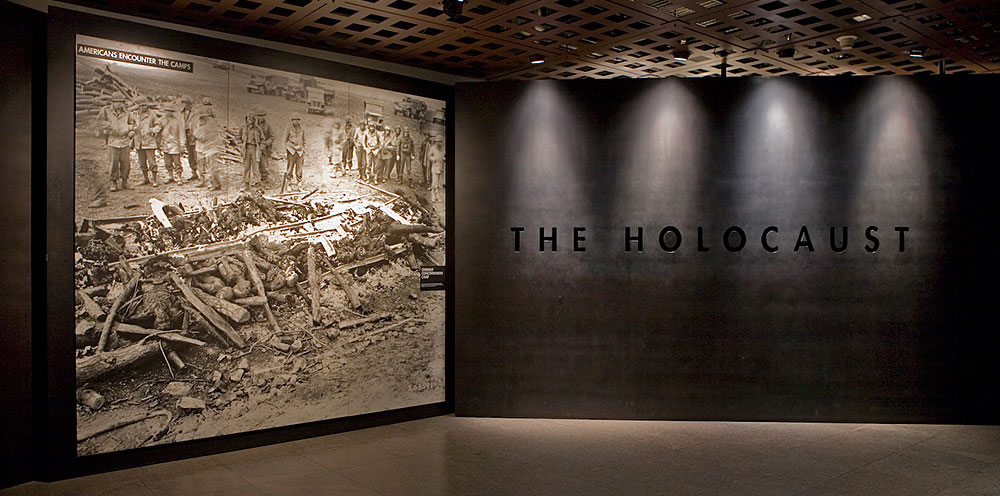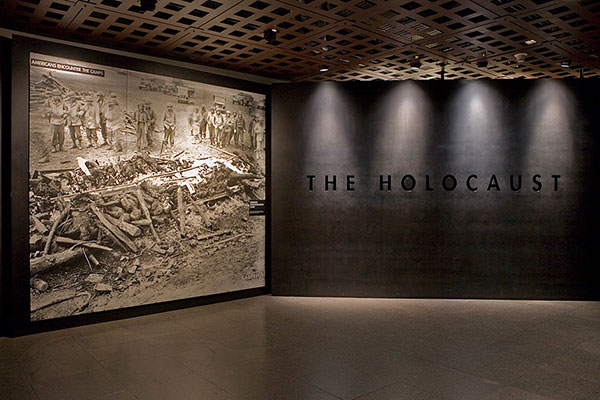Visit This Exhibition
Location: Accessed by elevators on the First Floor
Tickets: Required
Plan to spend: 1 to 3 hours
Recommended: Ages 11 and up
Spanning three floors, our self-guided Permanent Exhibition, The Holocaust, offers a chronological narrative of the Holocaust through historical artifacts, photographs, and film footage. Throughout the exhibition, visitors will also encounter personal objects and the eyewitness testimonies of individual survivors.
Nazi Assault—1933 to 1939
The opening floor explores the rise of the Nazi party in Germany in 1933 through the outbreak of World War II in September 1939. This portion of the exhibition explores turning points in the Holocaust such as the Nuremberg Race Laws, Kristallnacht, the Voyage of the St. Louis, and the Invasion of Poland.

This floor examines Nazi racial ideology, a cornerstone of German state policies from 1933 to 1945. —US Holocaust Memorial Museum
The "Final Solution"—1940 to 1945
The middle floor examines the evolution of Nazi policy toward the Jews, from ghettoization to mass murder in killing fields and gas chambers. On this floor, visitors will encounter primary-source artifacts, information on the invasion of the Soviet Union, photos of deportations of Jews to camps, and oral testimonies from Auschwitz.

Among the most precious artifacts on display in the Permanent Exhibition is a rusty milk can from the Warsaw ghetto, on loan to the Museum from the Jewish Historical Institute in Warsaw, Poland. It was used to hide and preserve a portion of the Oneg Shabbat archive to document Jewish life and death in the ghetto. —US Holocaust Memorial Museum
Last Chapter
The final floor displays the liberation of the Nazi camps and the Allied victory over Nazi Germany in 1945, rescue and resistance efforts, and the aftermath of the Holocaust. At the end of this floor, visitors can sit in our exhibition theater to watch video testimonies of Holocaust survivors.


